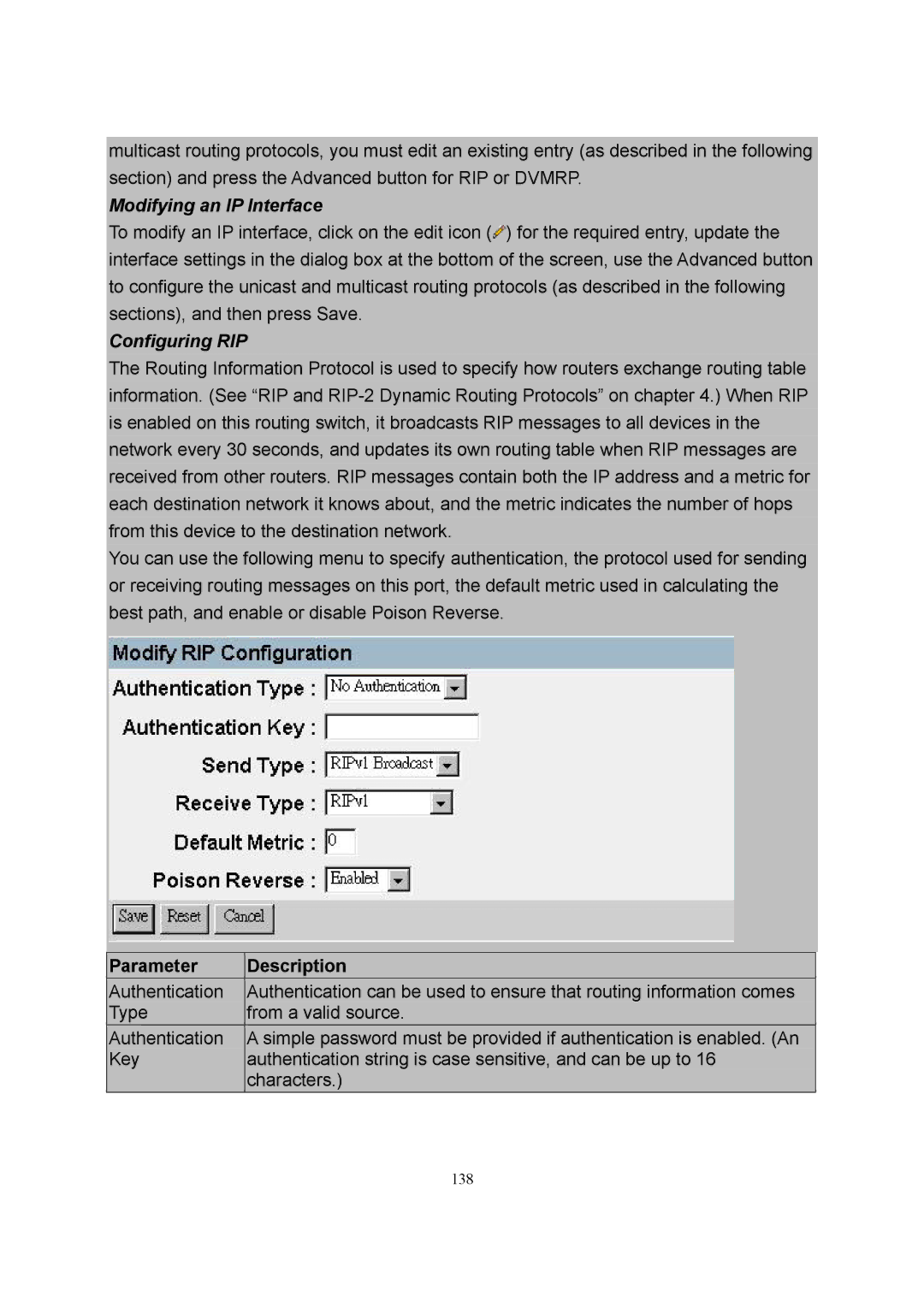
multicast routing protocols, you must edit an existing entry (as described in the following section) and press the Advanced button for RIP or DVMRP.
Modifying an IP Interface
To modify an IP interface, click on the edit icon (![]() ) for the required entry, update the interface settings in the dialog box at the bottom of the screen, use the Advanced button to configure the unicast and multicast routing protocols (as described in the following sections), and then press Save.
) for the required entry, update the interface settings in the dialog box at the bottom of the screen, use the Advanced button to configure the unicast and multicast routing protocols (as described in the following sections), and then press Save.
Configuring RIP
The Routing Information Protocol is used to specify how routers exchange routing table information. (See “RIP and
You can use the following menu to specify authentication, the protocol used for sending or receiving routing messages on this port, the default metric used in calculating the best path, and enable or disable Poison Reverse.
Parameter | Description |
|
|
Authentication | Authentication can be used to ensure that routing information comes |
Type | from a valid source. |
|
|
Authentication | A simple password must be provided if authentication is enabled. (An |
Key | authentication string is case sensitive, and can be up to 16 |
| characters.) |
|
|
